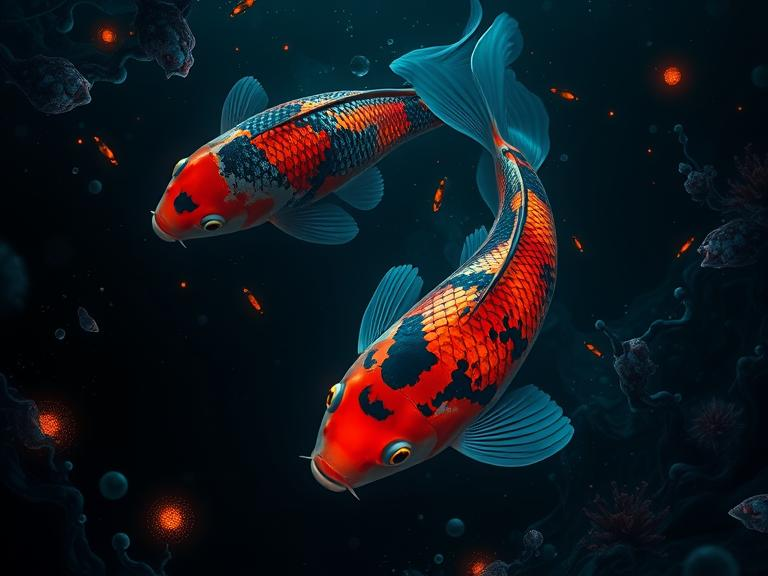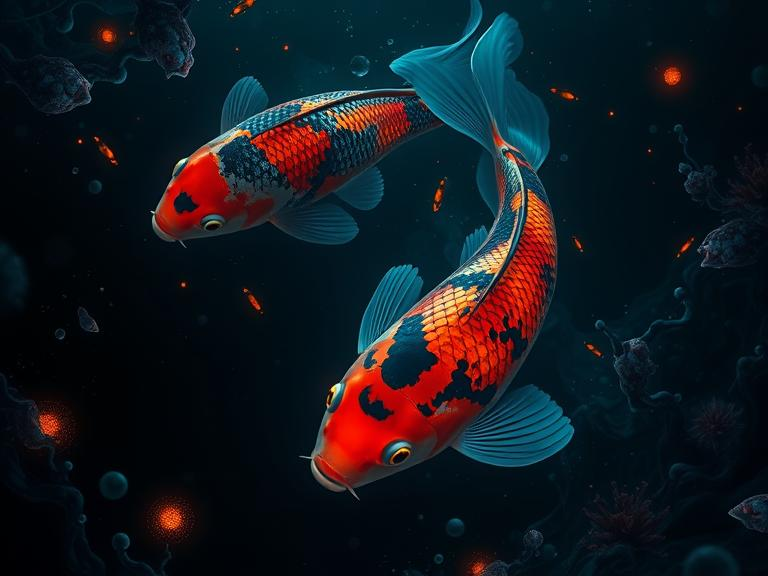
Koi fish, known for their vibrant colors and elegant swimming patterns, are among the most beloved ornamental fish in the world. Originating from Japan, koi have become a symbol of prosperity, perseverance, and good fortune in many cultures. These beautiful fish are often kept in ponds and water gardens, admired not only for their aesthetic appeal but also for their deep cultural significance.
Origins and History
Koi fish (Cyprinus rubrofuscus) are a domesticated variety of the common carp. Their history dates back to China over a thousand years ago, but they gained prominence in Japan during the 19th century when selective breeding techniques were developed to enhance their colors and patterns. Today, koi breeding has become an art form, with many varieties available, each distinguished by unique colorations and markings.
Popular Koi Varieties
There are numerous koi varieties, each classified based on color, pattern, and scale type. Some of the most well-known types include:
- Kohaku – White koi with red markings, symbolizing purity and success.
- Taisho Sanke – White koi with red and black markings, adding depth and complexity to its appearance.
- Showa Sanshoku – Similar to Sanke but with more dominant black patterns.
- Ogon – A single-colored metallic koi, often in gold or platinum shades, symbolizing wealth.
- Shusui – A scaleless variety with blue and red markings, known for its elegance.
Caring for Koi Fish
Keeping koi fish requires proper care and maintenance to ensure their health and longevity. Some key aspects of koi care include:
- Pond Size and Water Quality – Koi need a spacious pond with high-quality, well-filtered water. The ideal temperature ranges between 15-25°C (59-77°F).
- Diet and Nutrition – A balanced diet rich in proteins, vitamins, and minerals is essential. Many koi keepers feed them specially formulated pellets along with fresh vegetables.
- Health Monitoring – Koi are susceptible to diseases like bacterial infections and parasites. Regular water testing and observation are necessary to maintain their well-being.
Symbolism and Cultural Significance
Koi fish are often associated with perseverance and strength due to their ability to swim upstream. In Japanese culture, koi are linked to samurai warriors, representing courage and determination. Many also believe that koi bring good luck, and they are often featured in artwork, tattoos, and feng shui designs to attract prosperity and harmony.
Conclusion
Koi fish are not just ornamental pets; they are a living representation of beauty, resilience, and cultural heritage. Whether kept in a backyard pond or admired in public gardens, these magnificent fish continue to inspire and captivate people worldwide.

